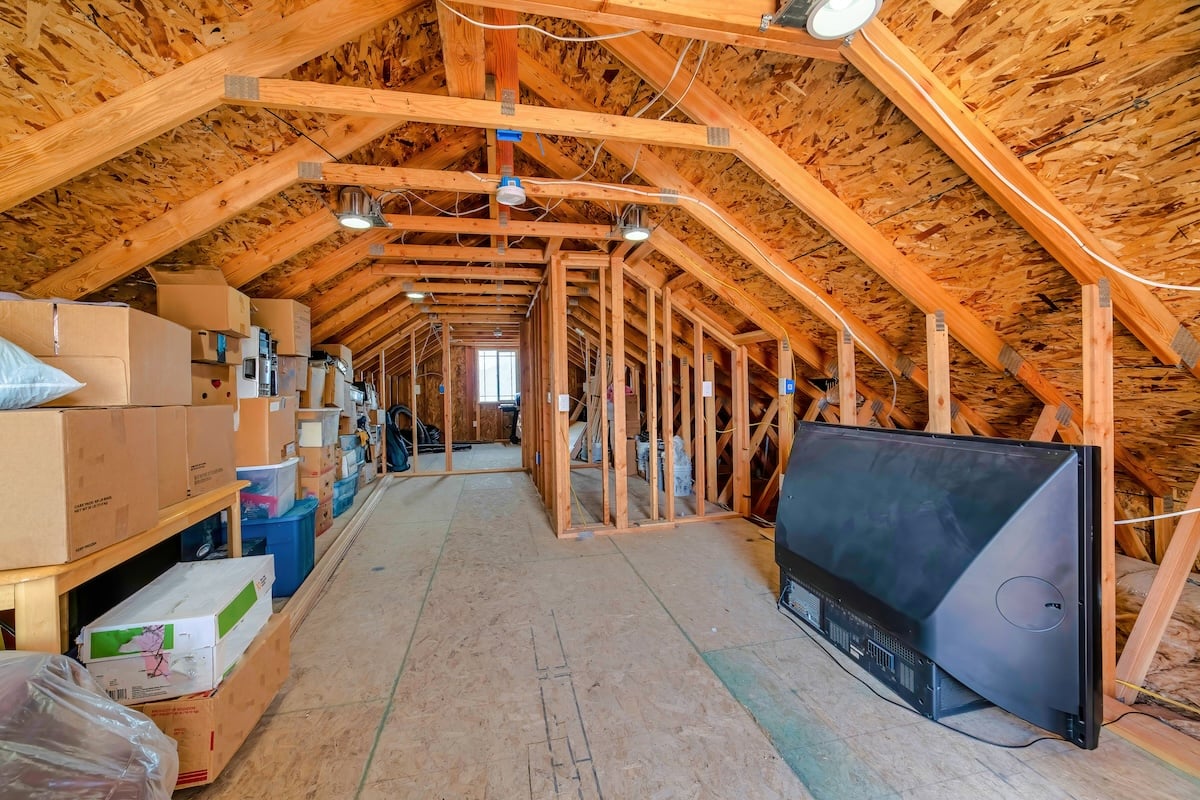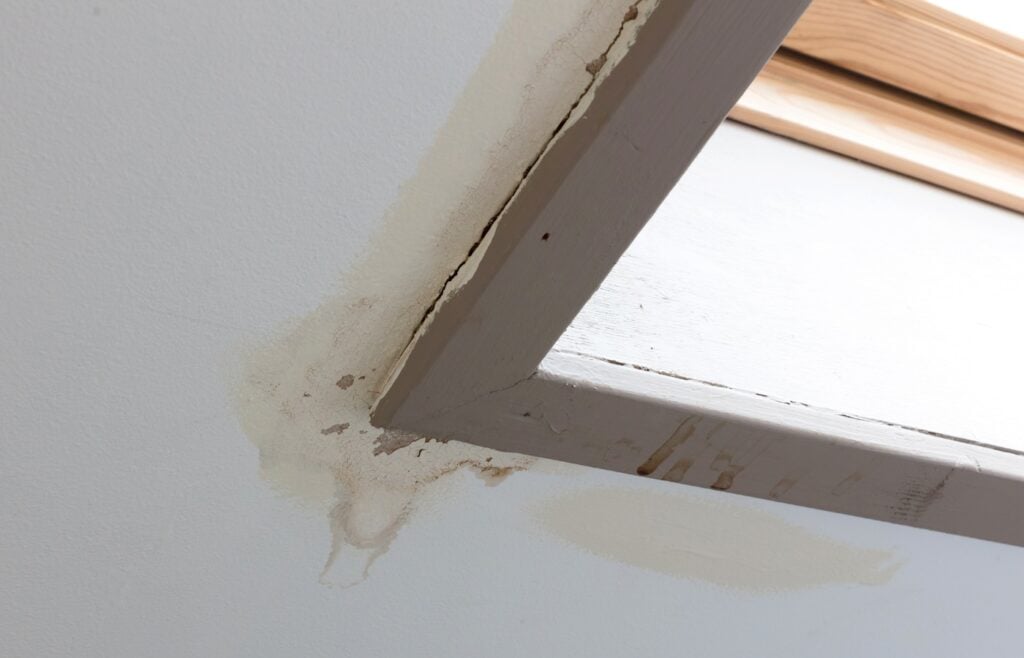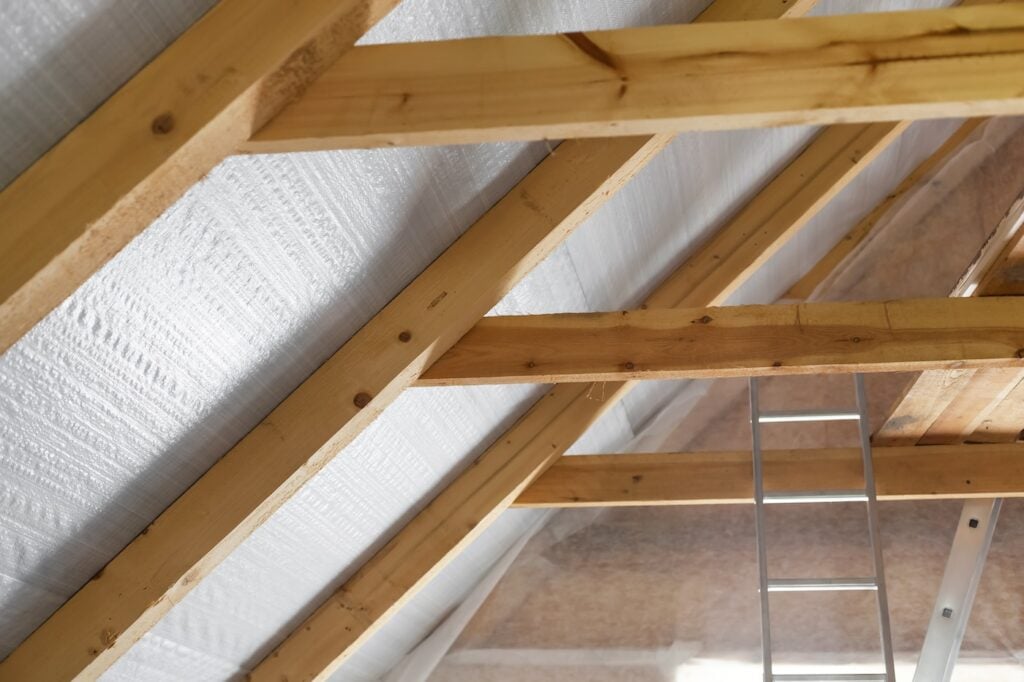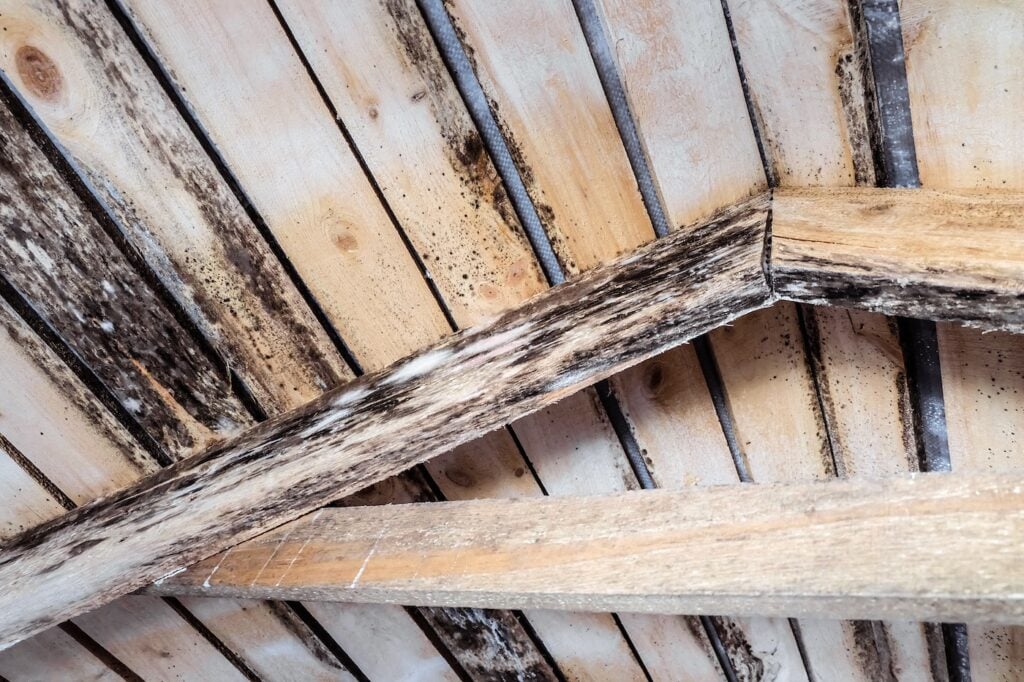
What Causes Attic Condensation (And How to Fix It)
June 19,2025
7 minutes Read
Condensation in the attic is a common issue for many homeowners, often leading to problems like mold growth, structural damage, and reduced energy efficiency if left unaddressed. This often-overlooked issue occurs when warm air meets a cold surface in your attic space, creating moisture that can trigger long-term damage. Recognizing the underlying causes and learning how to fix them can save your home from costly repairs and maintain a healthy indoor environment.
What exactly causes attic condensation, and how can you address it? Here’s a quick preview of what we’ll cover:
- The main causes of humid air and moisture buildup in your attic space
- Why this issue could lead to bigger problems over time
- Solutions you can implement to fix attic condensation and prevent it from coming back
Understanding condensation in your attic space is critical and could be the difference between a well-maintained home and one at risk of significant damage. Let’s get to the root cause of the issue and explore practical solutions.
💧 What Causes Attic Condensation?

Condensation in your attic space doesn’t happen randomly. It’s almost always a byproduct of improper ventilation, insulation, or sealing. Below, we’ll explore the chief reasons this problem occurs in homes and how they are often interconnected.
Poor Ventilation
One of the most common causes of condensation in attic spaces is poor or inadequate ventilation. Without proper airflow, the warm air that rises into your attic has no way to escape. This air, often infused with moisture from daily activities like cooking, showering, and laundry, gets trapped, leading to the formation of condensation.
Signs of Poor Ventilation:
- Excessively hot or humid attic space in summer
- Frost or visible moisture in winter
- Musty smells or signs of mold growth
Proper roof vents, including ridge and soffit vents, are crucial to allowing humid air to escape effectively.
Insufficient Insulation
Another major factor causing attic condensation is insufficient or poorly installed insulation. Without the right level of insulation, warm air from your living spaces rises through the ceiling into your attic. Combined with cold surfaces in the attic during winter, this results in moist air condensing onto surfaces like wood and metal.
Insulation Issues to Watch For:
- Insufficient R-value or deteriorated insulation materials
- Gaps or uneven insulation coverage
- Missing insulation around entry points or skylights
Improving insulation can help maintain a consistent temperature in your attic, reducing the risk of condensation.
Air Leaks
Air leaks are a silent culprit behind many attic condensation problems. Small gaps and cracks around wiring, plumbing, and light fixtures allow warm, moist air to escape from your living spaces into the attic. This trapped humid air eventually condenses when it contacts cooler attic surfaces.
Common Air Leak Locations:
- Recessed lighting and ceiling openings
- Gaps around vents, chimneys, or ducts
- Poorly sealed attic hatch doors
By addressing air leaks through comprehensive air sealing, you can limit the amount of warm or moist air escaping into the attic.
Incorrect Use of Venting Systems
Sometimes, improper venting within the home contributes to attic condensation. For example, bathroom or kitchen exhaust fans that vent directly into the attic instead of outdoors can trap humid air. While the fan’s primary purpose is to expel the air, it inadvertently creates condensation when directed into the attic space.
Proper Venting Solutions:
- Ensure all exhaust fans vent outside the house
- Check and maintain ductwork to prevent blockages
- Avoid venting dryers or HVAC systems into the attic space
Improper venting systems are easy to overlook but can cause major problems if left unchecked.
⚒️ How to Fix and Prevent Attic Condensation

The good news? Attic condensation problems are solvable! Below are actionable solutions for fixing current condensation issues and preventing future ones.
Improve Ventilation
Adequate ventilation is critical to controlling moisture in your attic. Here’s how you can bolster airflow in your attic space:
- Install Roof Vents: Add ridge vents, soffit vents, or gable vents as necessary to ensure proper airflow. These vents allow humid air to escape while pulling in fresh, dry air.
- Regularly Inspect and Maintain Vents: Check for debris, blockage, or damage to existing vents. Ensure they’re functioning effectively year-round.
- Invest in an Attic Fan: For homes struggling with condensation, powered attic fans can effectively pull warm air out of the attic, especially during high-humidity periods.
Strengthen Insulation
Proper insulation minimizes temperature fluctuations in your attic, reducing the chances of condensation forming. Key steps include:
- Assess your attic’s current insulation R-value and compare it to the recommended standard for your area.
- Replace old, degraded insulation materials to give your home better thermal resistance.
- Add insulation around trouble spots like hatches, attic stairs, or recessed lighting.
Maintaining consistent insulation coverage is one of the most effective ways to combat attic condensation.
Conduct Comprehensive Air Sealing
To prevent warm air from escaping into your attic:
- Locate and seal any cracks, gaps, or holes in your attic floor, especially around pipes, light fixtures, and vents.
- Use caulk, spray foam, or weather stripping to seal gaps effectively.
- Don’t forget to seal your attic hatch or door to prevent moist air from seeping through.
Upgrade Venting Systems
Ensure your home’s venting systems are functioning as they should:
- Reroute kitchen and bathroom exhaust fans to vent outdoors instead of into the attic space.
- Check dryer vent lines to ensure they exit outdoors without leaks or blockages.
Improving these systems prevents warm, humid air from being dumped into your attic.
Monitor and Maintain Your Attic
Ongoing care will ensure that attic condensation doesn’t return. Here are some steps for regular maintenance:
- Conduct seasonal checks of your attic space for any signs of moisture or mold.
- Keep roof vents clear of obstructions like debris or animal nests.
- Use a hygrometer to monitor humidity levels in your attic, ensuring they remain under control.
Proactive maintenance can save you from major issues down the road.
3-Step Checklist to Secure Your Attic’s Health
- Inspect your attic every six months for condensation, frost, or mold.
- Ensure proper airflow using roof vents and fans if necessary.
- Regularly reassess your attic insulation and seal air leaks to maintain a moisture-free environment.
❗️ Why Addressing Attic Condensation is Critical

Failing to address attic condensation can lead to several costly and time-consuming problems:
- Mold Growth: Excess moisture creates the ideal environment for mold, which can spread to other parts of your home and pose health risks.
- Structural Damage: Condensation can weaken wood framing, metal components, and insulation in your attic.
- Energy Inefficiency: Poor airflow and insulation can drive up your energy bills as your HVAC works harder to maintain indoor temperatures.
Addressing the issue sooner rather than later helps protect your attic and the rest of your home.
✅ Why Trust Heartland Roofing?
At Heartland Roofing, we understand the importance of maintaining a safe, dry attic space for the health of your home. Our team of experienced professionals specializes in resolving condensation issues, from improving ventilation to upgrading insulation and sealing air leaks. We prioritize quality workmanship and use proven solutions to keep your attic dry and your home protected.
When you choose Heartland Roofing, you’re choosing a team that values your home’s longevity and comfort. Contact us today and learn how we can help!

Get Started Today!
From roofing to siding, Heartland Roofing is the team you need to take your home exterior to the next level. All you need to do is reach out! Fill out our contact form or give us a call to get the reliable help that you need.
4.7 rating
94% recommend
A+ rating